The Dior Medallion Chair: A classic reimagined
“Sober, simple and above all, classic and Parisian,” Christian Dior wrote in his memoirs about what is now known as the Dior Medallion Chair — a potent symbol of a storied fashion house.
He set up his first boutique in 1946 on 30 Avenue Montaigne, an elegant hôtel particulier “with its reduced size and classic elegance without overwhelming pedigree,” commissioning the decorator Victor Grandpierre since he thought their tastes “were perfectly in tune thanks to a shared search for our childhood paradises.”
The interiors evoked the genteel refinement of the Louis XVI style that Dior adored and would revisit again and again in the design of his garments. It was a “decorated but not decorative” atmosphere to which the designer aspired: White paneling, gilded mirrors, crystal chandeliers, Trianon grey walls, white lacquered furniture, Toile de Jouy fabrics.

Dior believed that essential French aesthetics resided in the Palace of Versailles and loved the oval-backed medallion chair that Louis XVI used, designed in the late 18th century for the apartments of Marie Antoinette, with a wide, ruffled base resembling petti-skirts and a narrow oval back suggesting a corseted bodice.
Done in the neoclassical style, the chair was considered minimalist after the excesses of the Rococo. Dior, however, had it pared down further to make it more contemporary, making it the perfect seat for his guests watching his fashion shows.
The chair became a signature of Dior’s fashionable empire, immortalized in fragrance ads by the illustrator René Gruau. It has become as iconic to the house as the Bar jacket.
After Dior’s death in 1957, various designers took over, reinterpreting the founder’s classics in different ways, some causing outrage among clients, like Yves Saint Laurent’s tributes to Beatniks and the student riots, John Galliano’s homeless collection, and Maria Grazia Chiuri‘s recent T-shirts proclaiming “We Should All Be Feminists.”
Inasmuch as Dior’s sartorial codes have been subverted and pushed to the extreme through the years, his beloved Medallion Chair has remained unchanged, prompting the house to finally give it a makeover by asking 17 leading artists and designers to reimagine the emblematic piece using state-of- the-art technology to reflect a timeless modernity.
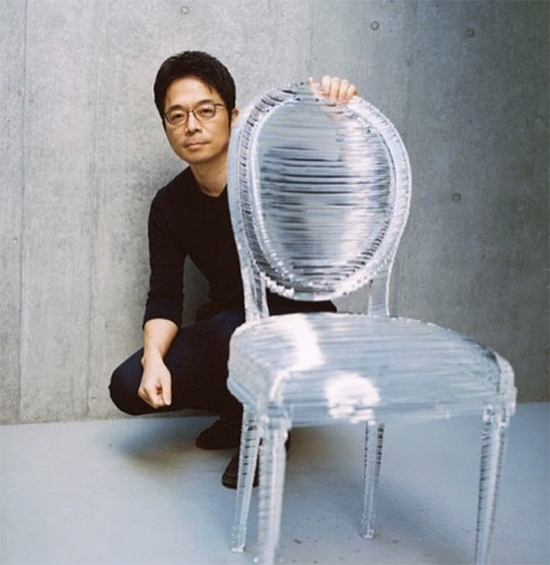
Turning the chair into an artwork “that illustrates the history that people of today haven’t experienced and that also offers an idea of the future,” Tokujin Yoshioka, who designed the 2020 Olympics torch, created “Medallion of Light,” using 364 randomly stacked plates of transparent resin, the material closest to light, which is an endless source of fascination for him.
Employing the same material, Seungjin Yang “upholstered” his chair using his signature balloon technique.
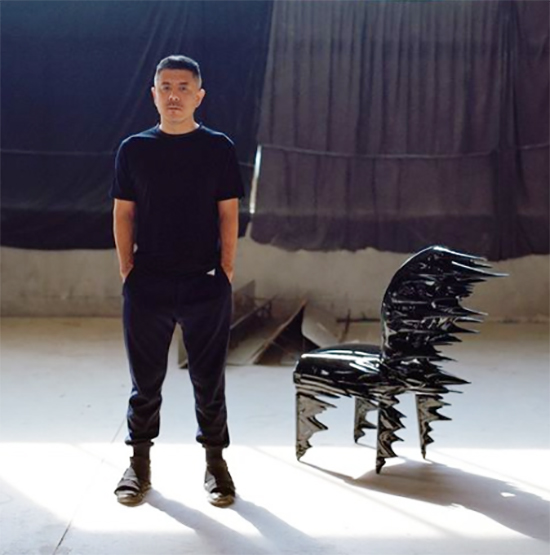
Ma Yansong also transported his chair into the future, using 3D-printed polyurethane to create “Meteor,” a piece that looked like it was caught in motion while flying through space.
Some pieces were more conceptual. Pierre Charpin distilled it to just an outline in black metal resin and a mirrored seat so the sitter can “look at oneself before being looked at.”
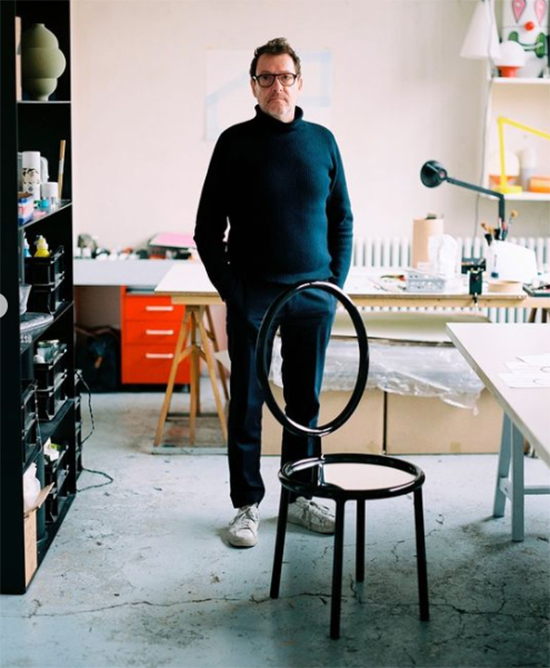
Sam Baron’s “Ensembles” is a haphazard mélange of four pared-back chairs.
Nendo’s “chaise Medaillon 3.0” renders the signature oval back as a void in its curved tempered glass version that has a pink hue, a wink at the Miss Dior perfume packaging.
Khaled El Mays deconstructed the original by extending the back and adding a straw-backed mirror and fringed leather feet.
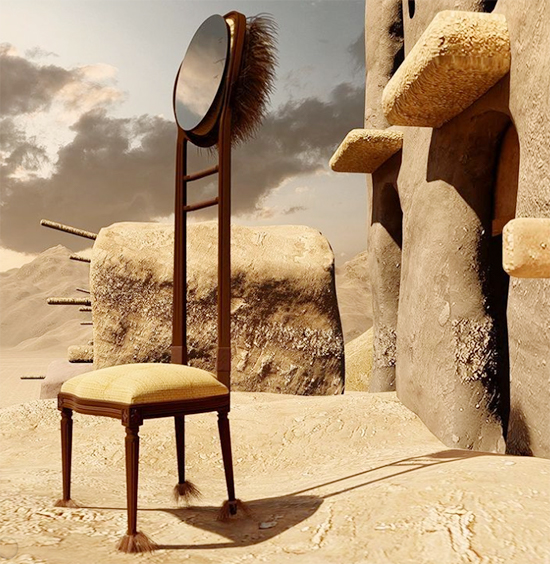
Others had more direct tributes to the founder or the house’s codes. As homage to Dior’s love of flowers and botanicals, Joy de Rohan Chabot made her version bloom with delicate bronze blooms, almost like one of his couture gowns.
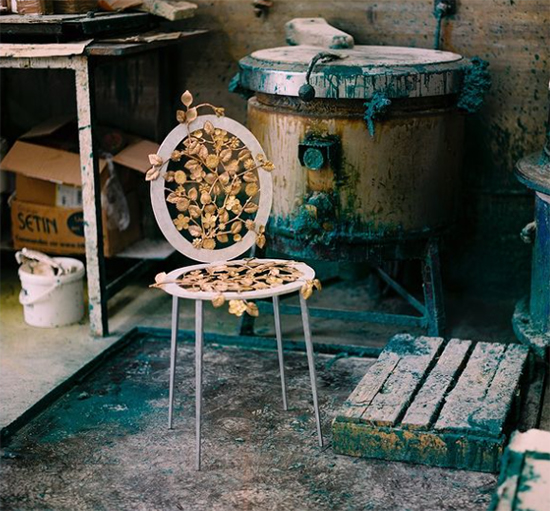
Atang Tshikare’s “Dinaledi” was embellished with Bantu “soul” pictographs done in beadwork handmade by women from the Xhosa people in Cape Town, South Africa, and vegan leather with celestial designs — a nod to stars that were one of Dior’s favorite symbols. The leather was debossed so that visually impaired people can appreciate it.
Pierre Yovanovitch did “Monsieur et Madame Dior,” a pair crafted in bronze and upholstered with embroidered canvas in Dior’s oblique logo pattern developed by Marc Bohan in 1967.

India Mahdavi maintained Dior’s gray lacquered wood of the original but upholstered a set of five chairs in Djerba wool from Kashmir, hand-embroidered in some of the late designer’s famous crochet patterns. Each one is different but together “a united tribe despite their individuality.”
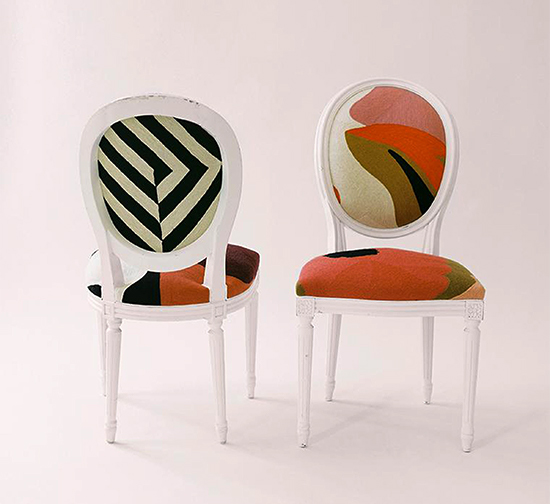
It actually speaks about the whole collection of 17 creations. It’s the uniqueness of each piece and the originality of each designer, after all, that Monsieur Dior would have prized above all, once saying that “Individuality will always be one of the conditions of real elegance.”


